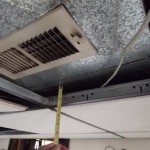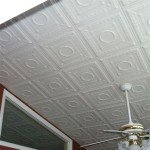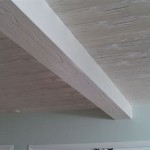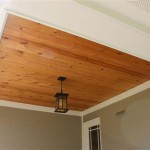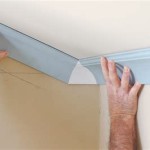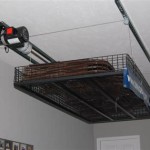Cost of False Ceiling in One Room: A Comprehensive Guide
False ceilings, also known as dropped ceilings or suspended ceilings, are secondary ceilings installed below the main structural ceiling of a room. They are widely used in residential and commercial spaces to enhance aesthetics, improve acoustics, conceal wiring and ductwork, and provide insulation. Understanding the cost of installing a false ceiling in a single room requires a thorough consideration of various factors, including the type of material, design complexity, room size, and labor charges.
This article aims to provide a detailed analysis of the various cost components involved in installing a false ceiling in a single room. It will cover different types of false ceiling materials, the factors influencing their prices, and a breakdown of labor costs. Furthermore, it will explore the additional expenses that may arise during the installation process. This information will equip homeowners and project managers with the necessary knowledge to accurately estimate the cost of a false ceiling project and make informed decisions.
Key Factors Influencing False Ceiling Costs
Several factors significantly impact the overall cost of installing a false ceiling. These factors encompass material selection, design complexity, room size and shape, and local labor rates. A thorough understanding of these elements is crucial for accurate cost estimation.
Material Selection: The choice of material is a primary driver of the total cost. Different materials have varying price points and properties. Gypsum boards are a common and relatively affordable option, offering fire resistance and ease of installation. Plaster of Paris (POP) is another popular choice, known for its versatility in creating intricate designs. Wooden ceilings, while adding warmth and elegance, tend to be more expensive. Metal ceilings are durable and often used in commercial settings, but their cost can be higher than gypsum or POP. PVC panels are a budget-friendly option, but their aesthetic appeal may be limited. The selection of the material should align with the desired aesthetic, functional requirements, and budget constraints.
Design Complexity: The complexity of the false ceiling design directly correlates with the installation cost. Simple, flat ceilings are the most economical, requiring less labor and material. More intricate designs, involving multiple levels, curves, or decorative elements, increase both the material quantity and the time required for installation. Suspended grid ceilings, often used in commercial spaces, offer a modular and easily customizable design, but the grid and tile components contribute to the overall cost. The use of recessed lighting, intricate patterns, or special finishes further elevates the cost due to increased labor and material requirements.
Room Size and Shape: The size of the room directly influences the amount of material required to cover the ceiling area. Larger rooms naturally require more gypsum boards, POP, or other ceiling materials. The shape of the room also plays a role. Irregularly shaped rooms, with angled walls or curved sections, necessitate more precise cutting and fitting, potentially increasing material wastage and labor time. Complex room shapes may also require specialized framing and support systems to ensure the structural integrity of the false ceiling. Therefore, accurate measurements and a thorough understanding of the room's geometry are essential for estimating material requirements and labor costs.
Labor Costs: Labor costs represent a significant portion of the total expense. The hourly or daily rates of skilled laborers, including carpenters, electricians (if lighting is involved), and painters, vary depending on location, experience, and the complexity of the project. Some contractors may charge a fixed fee for the entire project, while others bill hourly. It is advisable to obtain multiple quotes from different contractors to compare rates and services. The skill and experience of the labor force are crucial for ensuring a high-quality installation that meets safety standards and aesthetic expectations. Furthermore, labor costs can be influenced by factors such as the accessibility of the room, the need for scaffolding, and the presence of existing fixtures that require relocation or modification.
Detailed Breakdown of Material Costs
A comprehensive understanding of the material costs involved in false ceiling installation is paramount for accurate budgeting. This section provides a detailed breakdown of the typical prices associated with various false ceiling materials.
Gypsum Boards: Gypsum boards, also known as drywall or plasterboard, are a widely used and cost-effective option for false ceilings. The price of gypsum boards varies depending on thickness, size, and fire-resistant properties. Standard gypsum boards typically cost between $0.50 and $1.00 per square foot. Fire-rated gypsum boards, which offer enhanced fire protection, may cost slightly more. The cost of fasteners, joint compound, and other accessories required for gypsum board installation should also be factored into the material cost estimate. The ease of installation and availability of gypsum boards make them a popular choice for both residential and commercial applications.
Plaster of Paris (POP): POP is a versatile material that allows for intricate designs and seamless finishes. The cost of POP depends on the quality of the material and the method of application. POP can be applied directly to the existing ceiling or used to create pre-fabricated panels. The price of POP powder typically ranges from $0.30 to $0.70 per square foot, excluding labor for application. The creation of intricate designs with POP requires skilled artisans, which can significantly increase the overall cost. POP ceilings are often chosen for their aesthetic appeal and ability to create custom shapes and textures.
Wooden Ceilings: Wooden ceilings offer a natural and elegant aesthetic, but they tend to be more expensive than gypsum or POP. The cost of wood varies depending on the type of wood (e.g., pine, cedar, oak), the grade, and the finish. Solid wood planks can cost anywhere from $5 to $20 per square foot or more. Engineered wood options, such as plywood or MDF with a wood veneer, offer a more affordable alternative. The cost of wood framing, fasteners, and finishes (e.g., stain, sealant) should also be considered. Wooden ceilings require careful installation to ensure proper alignment and prevent warping or cracking.
Metal Ceilings: Metal ceilings are durable and often used in commercial spaces due to their fire resistance and ease of maintenance. The cost of metal ceilings varies depending on the type of metal (e.g., aluminum, steel), the finish, and the design. Metal ceiling tiles typically cost between $3 and $10 per square foot. Suspended grid systems, which are commonly used with metal ceiling tiles, add to the overall cost. The installation of metal ceilings requires specialized tools and expertise, which can impact labor costs. Metal ceilings are a practical choice for environments that require durability and easy cleaning.
PVC Panels: PVC panels are a budget-friendly option for false ceilings, offering water resistance and ease of cleaning. The cost of PVC panels typically ranges from $1 to $3 per square foot. PVC panels are available in various colors and patterns, but their aesthetic appeal may be limited compared to other materials. The installation of PVC panels is relatively straightforward, which can help reduce labor costs. PVC ceilings are often used in bathrooms, kitchens, and other areas where moisture resistance is important.
Additional Costs to Consider
Beyond the primary material and labor costs, several additional expenses may arise during the false ceiling installation process. These costs can significantly impact the overall budget and should be considered during the planning phase.
Lighting Fixtures: Integrating lighting into the false ceiling is a common practice that enhances both aesthetics and functionality. The cost of lighting fixtures depends on the type of fixtures (e.g., recessed lights, spotlights, LED strips), the brand, and the quantity. Recessed lights typically cost between $15 and $50 per fixture, excluding installation. LED strips offer a versatile and energy-efficient lighting solution, but they require a transformer and may need to be installed by a qualified electrician. The labor cost for installing lighting fixtures should also be factored into the overall budget. Careful planning of the lighting layout is essential to achieve the desired ambiance and illumination levels.
Electrical Wiring: Integrating lighting into a false ceiling usually necessitates new electrical wiring or modifications to existing wiring. The cost of electrical wiring depends on the length of the wiring, the number of circuits, and the complexity of the installation. It is crucial to hire a licensed electrician to ensure that the wiring meets safety standards and local codes. The cost of electrical wiring can range from $50 to $200 or more, depending on the scope of the work. Proper grounding and insulation are essential to prevent electrical hazards.
Painting and Finishing: After the false ceiling is installed, painting or finishing may be required to achieve the desired aesthetic. The cost of painting depends on the size of the ceiling, the type of paint, and the number of coats. Priming the ceiling before painting is recommended to ensure proper adhesion and a uniform finish. For POP ceilings, specialized finishing techniques may be required to create smooth surfaces and intricate textures. The cost of painting and finishing can range from $1 to $3 per square foot.
Demolition and Removal: If an existing ceiling needs to be removed before installing the new false ceiling, demolition and removal costs should be factored into the budget. The cost of demolition depends on the type of ceiling being removed (e.g., plaster, drywall, suspended ceiling) and the amount of debris generated. Removal of asbestos-containing materials requires specialized handling and disposal procedures, which can significantly increase the cost. The cost of demolition and removal can range from $1 to $5 per square foot.
Permits and Inspections: Depending on local regulations, a building permit may be required for installing a false ceiling. The cost of a permit varies depending on the location and the scope of the work. Inspections may also be required to ensure that the installation meets safety standards and building codes. It is advisable to check with the local building department to determine the permit requirements and inspection procedures.
In summary, determining the cost of a false ceiling in one room involves a multifaceted analysis. Material selection forms the bedrock of the expense, with options ranging from affordable gypsum boards to more luxurious wooden or metal alternatives. Design complexity, encompassing intricate patterns and multi-level structures, directly influences material usage and labor duration. Room size and shape introduce further variability, demanding precise measurements and potentially increasing material wastage. Crucially, labor costs, encompassing skilled carpenters, electricians, and painters, represent a significant component. Additional considerations, like lighting integration, electrical wiring, painting, demolition, and permits, can further inflate the overall budget. By carefully evaluating each of these factors, homeowners and project managers can gain a comprehensive understanding of the financial implications and make well-informed decisions regarding their false ceiling project.

False Ceiling Cost Tips To Calculate Your Expenses Beautiful Homes

How Much Does A False Ceiling Cost

False Ceiling Cost Tips To Calculate Your Expenses Beautiful Homes

Types Of False Ceiling Cost Paam Construction

False Ceiling Cost Tips To Calculate Your Expenses Beautiful Homes

Cost Of False Ceiling Design For Home Decorpot Interiors

False Ceiling Cost 2025 A Complete Guide To Budgeting Your Project

False Ceiling Cost 2025 A Complete Guide To Budgeting Your Project

Cost Of False Ceiling Design For Living Room Decorpot Home Interiors

False Ceiling Cost Tips To Calculate Your Expenses Beautiful Homes
Related Posts

